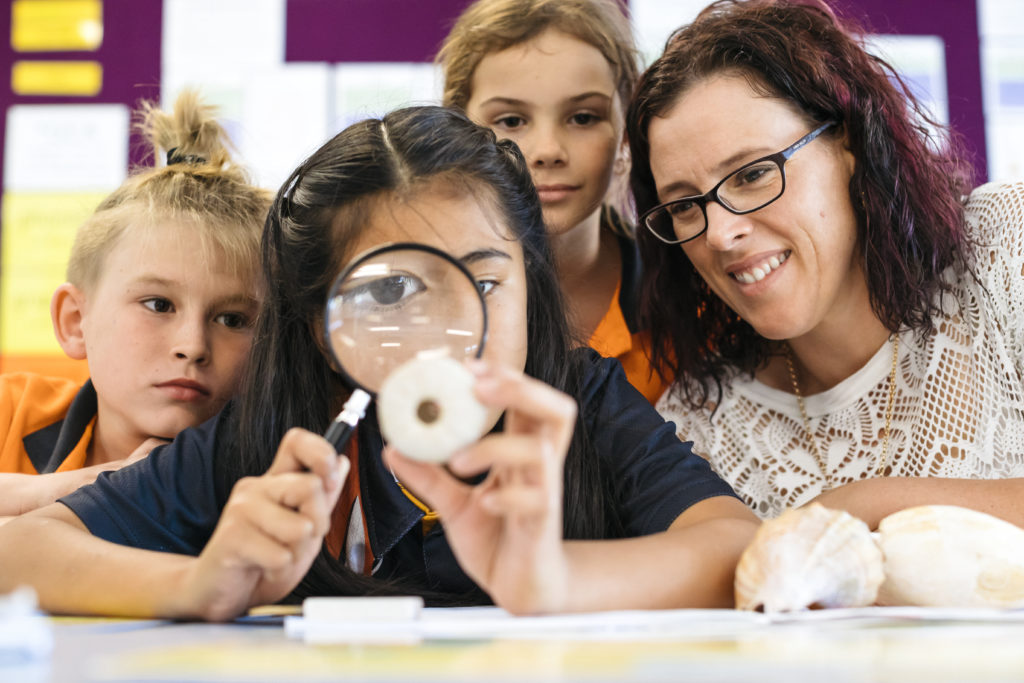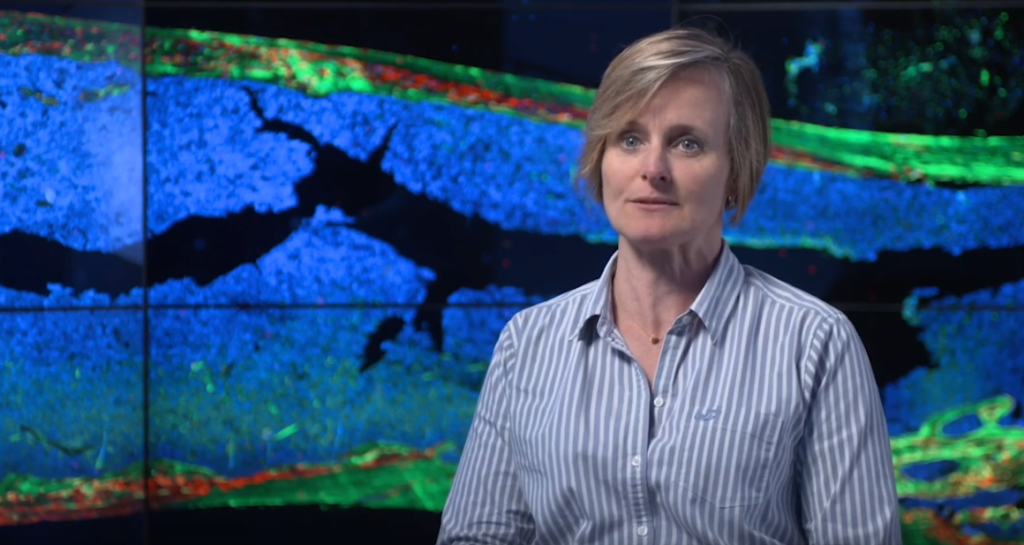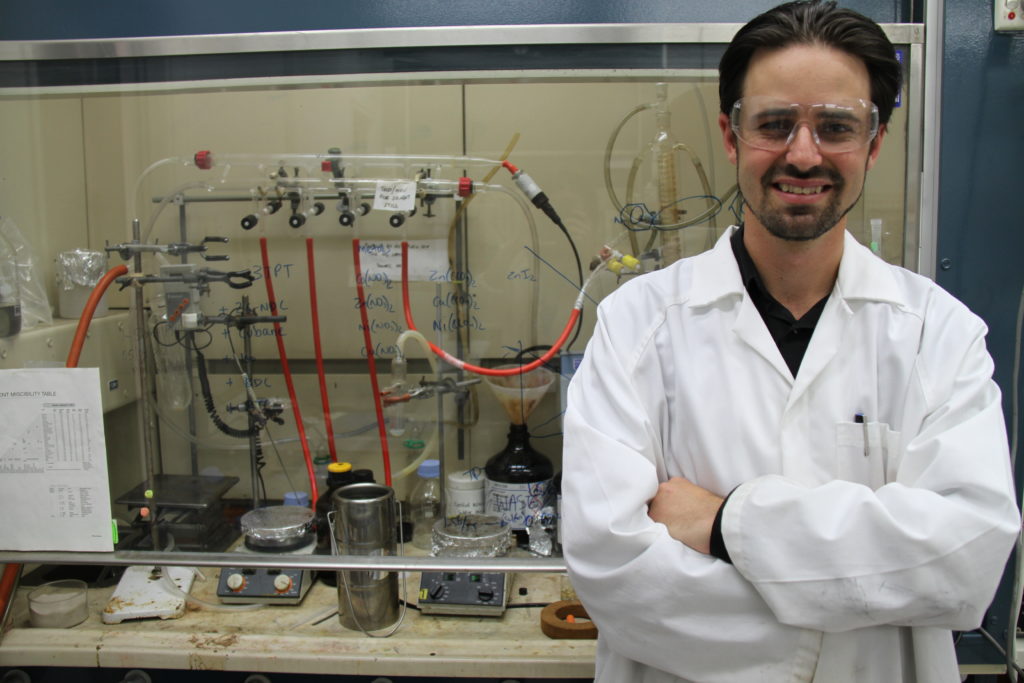
Our STEM in Schools program in action. Credit: Daniel Boud.
As we move into an era of fast-paced technological disruption, what will the careers of the future look like? The jobs we typically think of could be headed for a shakeup.
The Foundation for Young Australian’s 2015 report predicts that young people will have 17 jobs across five careers in their lifetime. And although technology will create many jobs, reports show a large number of jobs are being computerised or automated.
Science, technology, engineering and maths (STEM) skills are now more critical than ever.
Two of our STEM professionals – Susie Nilsson and Matthew Hill – are working on projects that don’t necessarily fit the mold of traditional science.
Challenging the status quo

Biomedical manufacturing scientist Susie Nilsson.
Take, for example, biomedical manufacturing scientist, Susie Nilsson. She always wanted to work in an area where she could help people. Originally that was medicine, but Susie ended up becoming a scientist because it allowed her to develop new and exciting medical technologies. Now, Susie and her team are working to keep the Australian population healthy.
“I wanted to be able to take something and develop it further. To allow the science to have an impact on everyday life. I got into science so I could improve our understanding of blood, bone marrow and how we can use it to help people,” Susie said.
Susie is focused on how we can use these findings to improve human health, particularly in the areas of bone marrow transplant, stem cell mobilisation and haematopoietic disorders such as leukaemia and bone marrow failure.
“Science at school must be highly reproducible. So, by default it might not be as interesting or fun as I know it is. One of the reasons I love science is because I get to develop new things and have fun while doing it.”
“Science now is very multidisciplinary. We have every type of STEM skill working in our team. There is a job in STEM that your child would love. They just have to know it exists.”
Building our understanding of STEM

Research scientist Matthew Hill.
Research scientist Matthew Hill knows the power in encouraging STEM. “It comes back to the saying – if you can’t see it, you can’t be it. We want students to see the possibilities in STEM that lie outside what people expect of STEM,” Matthew said.
Matthew and his team are trying to protect people exposed to toxic chemicals. They created nano technology called metal organic framework that is the world’s most porous material. If you filled a gas mask cannister with the nano materials it can protect firefighters and military personnel from weaponised toxic chemical gases and vapours. One teaspoon of the metal organic framework hidden inside the cannister is equal to the size of a soccer field. This mean the toxins can soak into the materials instead of people breathing them in.
“People don’t need to necessarily be a scientist (or a mathematician, engineering or an ICT expert), but they need to be STEM literate. We need to encourage people to not fear STEM,” Matthew said.
“There are many different paths of STEM and you’ll find something that suits you. You don’t even have to be the best in the world at something. If you’re interested and passionate, you can contribute.”
Both Susie and Matthew agree that the key factors to work in STEM is interest and a curious mind.
Share your interest in STEM in schools
But how can a primary or secondary school student see those opportunities? STEM in School provides the opportunity for students to explore the possibility of what a future in STEM could look like.
STEM in Schools brings together professionals, parliamentarians and schools to celebrate STEM careers. This year, STEM in Schools will highlight Australia’s global challenges and the people using innovative science and technology to solve them.
STEM in Schools in on Wednesday 30 October 2019. The event kicks off nationally with a special broadcast of a vodcast at 11:30am local time. Head to our STEM in Schools website to watch the vodcast or for more information about the program.
Share your activities on the day with us by using the #STEMinSchools #CSIRO hashtags on social media.


23rd December 2019 at 11:42 pm
It is interesting to a plethora of articles regarding encouraging schoolchildren into STEM careers, but exactly where are these careers being generated? It sure as heck isn’t in Australia. This nation’s economy is based on commodity exports and services, rather than intellectual property.
My experience as a graduate chemical and biomedical engineer in the late 80s and early 90s drove me out of the technical/ research into a completely unrelated field, management consulting. I worked at a university research centre for a few years after completing a masters degree, until, expecting our first child, the projects that I was working on became de-funded overnight, and I was left almost high and dry. Fortunately, I had just completed my MBA, and my wife, a foreign medical graduate, had also entered the workforce in that year, and I entered the consulting business which I stayed in for the next few decades. It provided the prosperity and stability.
I loved the incredibly intelligent people I worked with in the research environment, but the financial instability made it impossible to stay in.
I hope someone in Australia is planning to look after these childrens’ futures, otherwise, they’re going to have to get creative in their career management, or simply emigrate to countries that actually invest in applying their skills.